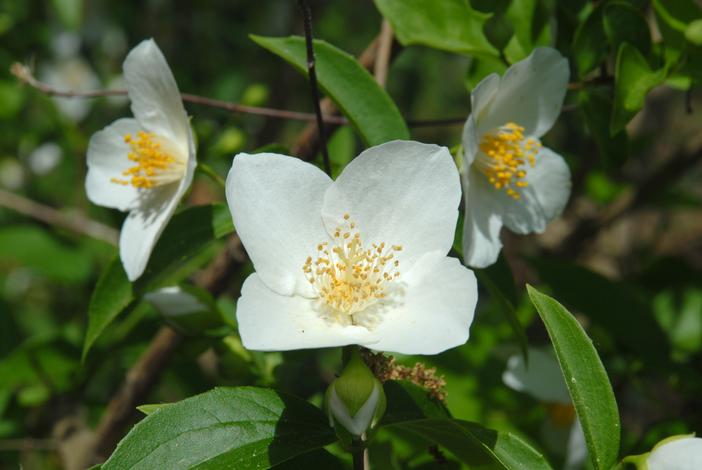Scentless Mock Orange
(Philadelphus inodorus)
Scentless Mock Orange (Philadelphus inodorus)
/
/

Douglas Goldman
CC BY-SA 4.0

































Estimated Native Range
Summary
Scentless Mock Orange is valued for its drought tolerance once established and its ability to thrive in a variety of soil conditions, making it a versatile choice for gardeners. It is often used in border plantings, as a specimen, or in naturalized areas. While it prefers full sun to part shade, it is adaptable to a range of light conditions. It is also relatively low maintenance, requiring minimal pruning to maintain its shape. This species is not known for significant pest or disease problems, but it can suffer from powdery mildew in humid conditions. It is not considered invasive and does not have aggressive roots, making it a safe choice for planting near structures.CC BY-SA 4.0
Plant Description
- Plant Type: Shrub
- Height: 6-10 feet
- Width: 6-8 feet
- Growth Rate: Rapid
- Flower Color: White
- Flowering Season: Spring
- Leaf Retention: Deciduous
Growth Requirements
- Sun: Full Sun, Part Shade
- Water: Medium
- Drainage: Medium, Fast
Common Uses
Bee Garden, Bird Garden, Border Plant, Butterfly Garden, Deer Resistant, Drought Tolerant, Hedges, Hummingbird Garden, Low Maintenance, Rabbit Resistant, Showy Flowers, Street Planting
Natural Habitat
Native to open woodlands and forest edges in the Southeastern United States
Other Names
Common Names: Scentless Mock-Orange, Appalachian Mock-Orange, Duftloser Pfeifenstrauch, Seringa Inodore, Storblommig Schersmin
Scientific Names: , Philadelphus inodorus, Philadelphus grandiflorus, Philadelphus inodorus var. grandiflorus, Philadelphus inodorus var. carolinus, Philadelphus inodorus var. laxus, Philadelphus inodorus var. strigosus, Philadelphus laxus, Philadelphus floridus var. faxonii, Philadelphus floridus var. rehderianus
GBIF Accepted Name: Philadelphus inodorus L.